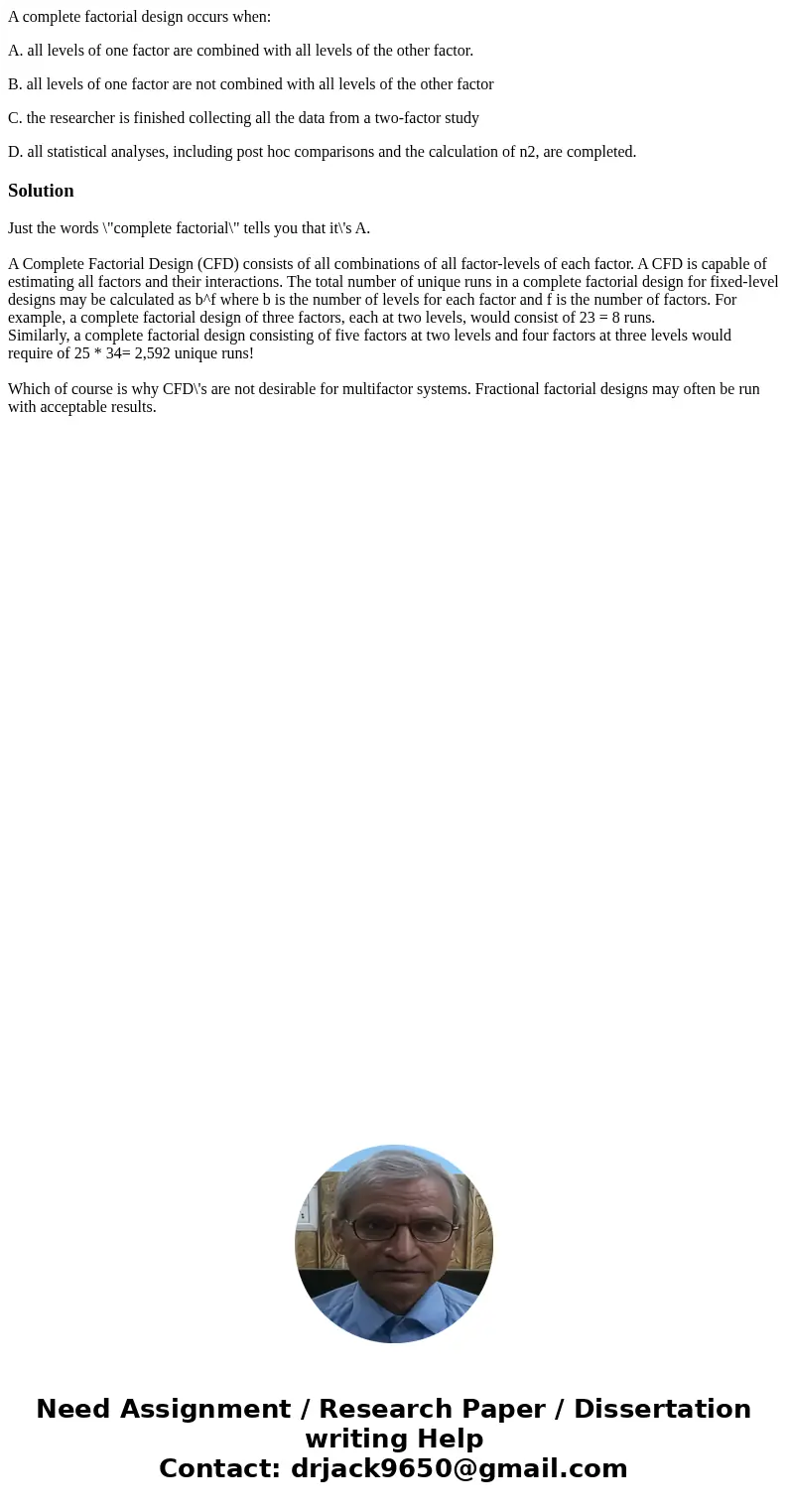A complete factorial design occurs when A all levels of one
A complete factorial design occurs when:
A. all levels of one factor are combined with all levels of the other factor.
B. all levels of one factor are not combined with all levels of the other factor
C. the researcher is finished collecting all the data from a two-factor study
D. all statistical analyses, including post hoc comparisons and the calculation of n2, are completed.
Solution
Just the words \"complete factorial\" tells you that it\'s A.
A Complete Factorial Design (CFD) consists of all combinations of all factor-levels of each factor. A CFD is capable of estimating all factors and their interactions. The total number of unique runs in a complete factorial design for fixed-level designs may be calculated as b^f where b is the number of levels for each factor and f is the number of factors. For example, a complete factorial design of three factors, each at two levels, would consist of 23 = 8 runs.
Similarly, a complete factorial design consisting of five factors at two levels and four factors at three levels would require of 25 * 34= 2,592 unique runs!
Which of course is why CFD\'s are not desirable for multifactor systems. Fractional factorial designs may often be run with acceptable results.

 Homework Sourse
Homework Sourse